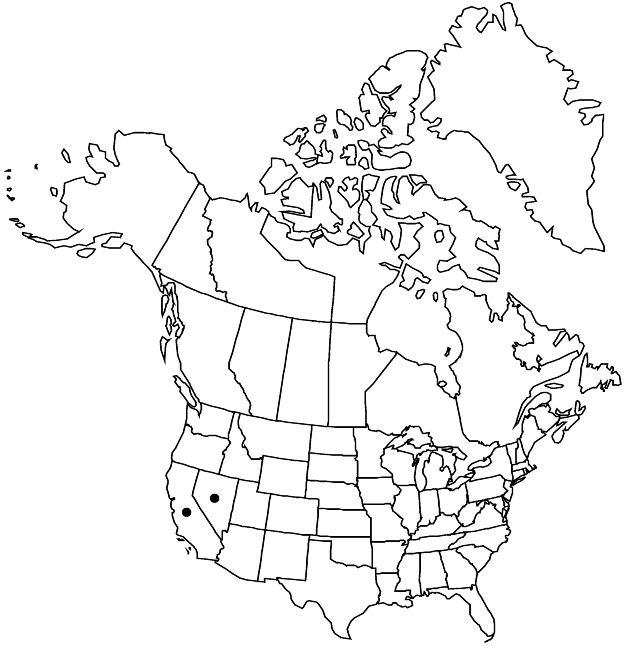Difference between revisions of "Ivesia lycopodioides var. lycopodioides"
FNA>Volume Importer |
imported>Volume Importer |
||
| (6 intermediate revisions by 2 users not shown) | |||
| Line 1: | Line 1: | ||
{{Treatment/ID | {{Treatment/ID | ||
|accepted_name=Ivesia lycopodioides var. lycopodioides | |accepted_name=Ivesia lycopodioides var. lycopodioides | ||
| − | |accepted_authority= | + | |accepted_authority= |
|publications= | |publications= | ||
|basionyms= | |basionyms= | ||
| Line 19: | Line 19: | ||
|elevation=3000–4000 m | |elevation=3000–4000 m | ||
|distribution=Calif.;Nev. | |distribution=Calif.;Nev. | ||
| − | |discussion=<p>Variety lycopodioides occurs in the Sierra Nevada from El Dorado and Alpine to Fresno counties, and on the Sweetwater Mountains of Mono County, California. The voucher reported by D. D. Keck (1938) from the Carson Range of Washoe County, Nevada, has not been located for confirmation. Of the three varieties, var. lycopodioides tends to have plants with the smallest leaflet lobes (ca. 1 mm) which lack apical setae. Plants also have more consistently simple caudices bearing a single rosette of glabrous or sparsely hairy leaves atop an enlarged, fleshy taproot.</p> | + | |discussion=<p>Variety lycopodioides occurs in the Sierra <i>Nevada</i> from El Dorado and Alpine to Fresno counties, and on the Sweetwater Mountains of Mono County, California. The voucher reported by D. D. Keck (1938) from the Carson Range of Washoe County, <i>Nevada</i>, has not been located for confirmation. Of the three varieties, <i></i>var.<i> lycopodioides</i> tends to have plants with the smallest leaflet lobes (ca. 1 mm) which lack apical setae. Plants also have more consistently simple caudices bearing a single rosette of glabrous or sparsely hairy leaves atop an enlarged, fleshy taproot.</p> |
|tables= | |tables= | ||
|references= | |references= | ||
| Line 28: | Line 28: | ||
-->{{#Taxon: | -->{{#Taxon: | ||
name=Ivesia lycopodioides var. lycopodioides | name=Ivesia lycopodioides var. lycopodioides | ||
| − | + | |authority= | |
| − | |authority= | ||
|rank=variety | |rank=variety | ||
|parent rank=species | |parent rank=species | ||
| Line 43: | Line 42: | ||
|publication year= | |publication year= | ||
|special status= | |special status= | ||
| − | |source xml=https:// | + | |source xml=https://bitbucket.org/aafc-mbb/fna-data-curation/src/2e0870ddd59836b60bcf96646a41e87ea5a5943a/coarse_grained_fna_xml/V9/V9_353.xml |
|subfamily=Rosaceae subfam. Rosoideae | |subfamily=Rosaceae subfam. Rosoideae | ||
|tribe=Rosaceae tribe Potentilleae | |tribe=Rosaceae tribe Potentilleae | ||
Latest revision as of 22:56, 5 November 2020
Stems decumbent to ascending, 0.3–1(–1.5) dm. Basal leaves 1–7 cm; leaflets tightly overlapping, glabrous or sparsely short-hirsute, lobes ± orbiculate, ± 1 mm, apical setae 0(–0.5) mm. Cauline leaves 0–1. Inflorescences usually ± capitate, 3–15(–20)-flowered, 0.5–1.5(–2) cm diam. Flowers 6–9 mm diam.; petals obovate, 2–3 × 1 mm; filaments 0.8–1.2 mm; styles 1–2 mm. 2n = 28.
Phenology: Flowering summer.
Habitat: Dry rocky flats or slopes, fellfields, in high-elevation sagebrush communities, subalpine to alpine conifer woodlands, alpine tundra
Elevation: 3000–4000 m
Discussion
Variety lycopodioides occurs in the Sierra Nevada from El Dorado and Alpine to Fresno counties, and on the Sweetwater Mountains of Mono County, California. The voucher reported by D. D. Keck (1938) from the Carson Range of Washoe County, Nevada, has not been located for confirmation. Of the three varieties, var. lycopodioides tends to have plants with the smallest leaflet lobes (ca. 1 mm) which lack apical setae. Plants also have more consistently simple caudices bearing a single rosette of glabrous or sparsely hairy leaves atop an enlarged, fleshy taproot.
Selected References
None.
